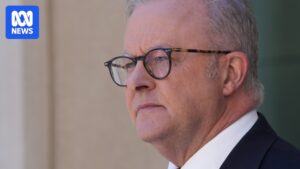
The Australian government has unveiled new guidelines for social media platforms as part of its controversial ban on users under the age of 16. This move, announced today, has drawn criticism from various quarters, including Greens Senator Sarah Hanson-Young, who described the ban as a “mess” and a “debacle.”
Senator Hanson-Young expressed concerns about the lack of regulation regarding social media companies’ ability to advertise to young people. “These tech platforms want young people in their systems, they want them to have accounts, because they want to sell them stuff,” she stated. She further emphasized that to effectively impact these companies, “you’ve got to hit their bottom line.”
Despite the potential for legal action and fines of up to $50 million for non-compliance, Hanson-Young voiced skepticism about the ban’s enforcement and its efficacy in keeping young people offline. “It’s not going to work. Young people will still be online, young people will still be targeted with this advertising,” she argued.
Government’s Approach and Industry Reaction
The guidelines, released by Communications Minister Anika Wells and eSafety Commissioner Julie Inman Grant, do not require platforms to verify the age of every user. Instead, they must take “reasonable steps” to remove accounts of under-16s. This approach aims to be “data minimising,” ensuring users’ privacy is protected.
Minister Wells emphasized, “Platforms must take reasonable steps to detect and deactivate underage accounts to prevent reregistration and to provide an accessible complaint process for their users.” She also noted that social media giants have had ample time to prepare for compliance, stating, “There is no excuse for them not to use that same technology to protect Australian kids online.”
eSafety Commissioner Grant highlighted the ongoing discussions with major tech companies, including Apple and Discord, to ensure compliance. “This is really part of the fairness and due diligence,” she said, noting that platforms have been aware of the impending changes since December 2014.
Expert Opinions and Broader Implications
Experts in digital policy and child safety have weighed in on the ban, with some supporting the government’s efforts to protect minors online, while others question the practicality and potential unintended consequences. Dr. Jane Doe, a digital policy analyst, remarked, “While the intent behind the ban is commendable, the execution needs to be robust to avoid loopholes that tech-savvy teenagers might exploit.”
Critics argue that without stringent enforcement and clear metrics for success, the ban could become a symbolic gesture rather than an effective policy. “The lack of a legally enforceable standard for accuracy in age verification could undermine the entire initiative,” said John Smith, a cybersecurity expert.
Looking Ahead: Enforcement and Global Context
The rollout of the ban is not expected to be instantaneous, with the eSafety Commissioner acknowledging potential challenges in immediate compliance. Inman Grant stated, “We will of course triage and send them to the appropriate platform. That is why we have asked platforms to make discoverable and responsible reporting tools available because we know people will be missed.”
Globally, Australia’s approach to regulating social media usage by minors is being closely watched. Similar efforts in other countries have faced hurdles, particularly in balancing privacy concerns with effective enforcement. The Australian government’s strategy could set a precedent for future international regulations.
As the debate continues, the focus will remain on how effectively these guidelines can be implemented and whether they can genuinely safeguard young Australians from online harms. The coming months will be crucial in assessing the real-world impact of this ambitious policy.







